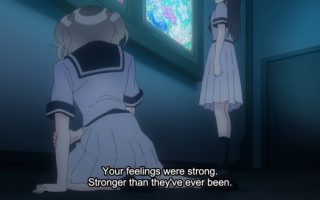Hello folks, and welcome back to Wrong Every Time. Today I come to you with a fresh pile of films and more besides, as my house has just recently concluded our screening of Nadia: The Secret of Blue Water. The show ended up falling significantly below my expectations in terms of overall quality, but it was nonetheless quite interesting to see GAINAX struggling through their first television production, establishing many of the concepts that would go on to inform Evangelion, and otherwise fumbling through an oddly lopsided mixture of Lupin, World Masterpiece Theater, and Space Battleship Yamato. With Nadia done, I’m guessing we’ll be continuing our Gundam journey with Victory Gundam, and also finishing off the surprisingly addictive League of Legends: Arcane. But for now, let’s run down the spoils of our latest Week in Review!
First up this week was Secret of the Incas, a ‘50s adventure film starring Charlton Heston as Harry Steele, a tourist guide who moonlights as an adventurer seeking a lost Incan artifact. Accompanied by Romanian defector Elena Antonescu (Nicole Maurey), he journeys all the way to the peaks of Machu Picchu, fending off rivals for the artifact along the way.
Secret of the Incas is a fair enough adventure film in its own right, though a touch lacking in tension and spectacle; the film relies too heavily on Heston’s admittedly considerable charisma, and thereby fails to take sufficient advantage of the action-friendly attractions of its jungle venue. It can’t compare to similarly dated adventure vehicles from Hawks and Ford, but nonetheless clearly served as the direct inspiration for Lucas and Spielberg’s Indiana Jones features, down to the precise outfit shared by Heston and Harrison Ford.
As such, Secret of the Incas provides an interesting snapshot of adventure filmmaking in transit, before Spielberg and his peers solidified the form of the modern blockbuster. Heston’s theatrics are frequently framed not as dashing and heroic, but as thoughtless and juvenile, with veteran character actor Thomas Mitchell serving as a grim reminder that there are no old adventurers. Violence is used sparingly, and character dynamics reign supreme; the film’s ultimate question is not “will Heston find the treasure,” but “will Heston allow the search for the treasure to define him.” And even the style of acting is quite distinct – Heston heralds from the theater-influenced golden era of Hollywood, while Ford works in a naturalistic mode that would only come in vogue during the New Hollywood era. With so many narrative variables shared by the two films, it was a treat to see how cinematic conventions shift from one era to the next.
We then checked out Mortal Engines, a steampunk adventure set in a world where cities have been set on wheels, and now roam about Europe intent on consuming other, smaller cities. Robert Sheehan and Hera Hilmar star as Tom Natsworthy and Hester Shaw, two unlikely companions who end up cast out of the mighty mobile craft that is London, forced to survive in the wastes until ultimately rising to fight for a vaguely defined future.
Mortal Engines’ plot is fairly boilerplate young adult drama crossed with a heavy heaping of Star Wars. Characters engage in chases and shootouts, terrible secrets and destinies are revealed, and young people with seemingly nothing in common discover they may be more alike than they think. It’s all fairly predictable stuff, and the characters garnishing the fringes don’t quite pop like they should; it’s clear the film is shooting for “iconic” but more often striking “archetypal,” a common and somewhat forgivable misstep.
That said, I have to give Mortal Engines extra credit for its delightfully strange and meticulously crafted world. You all should know I’m not a worldbuilding-first sort of guy, and Mortal Engines would certainly benefit from more distinctive and engaging leads, but there’s just so much detail and whimsy built into its post-apocalypse that I couldn’t help but be charmed. Peter Jackson’s hand is clear in the film’s fantastical scope and rip-roaring chase scenes, leaving me ultimately saddened that it was such a box-office bomb. Sure, the plot is predictable, but how many movies about weaponized mobile cities have you seen lately? I thought so.
Next up was 65, the recent scifi action film whose pitch is basically just “Adam Driver fights dinosaurs.” Driver stars as Mills, a spaceship pilot from a distant planet who volunteers for a two-year flight in order to pay for his daughter’s expensive medication. Mid-flight, an undocumented asteroid sends Driver careening down on early earth, with only a young girl named Koa also surviving the flight. The two will have to work together to survive in a hostile wilderness, doing battle with terrible lizards and ultimately seeking a way back home.
I really don’t know what to make of 65, to be honest. Its premise is absurd and emphatically indulgence-friendly, but the film’s approach is actually somber and sober, more a meditation on grief and endurance in the style of The Revenant than anything approaching a traditional action film. But a film like that requires an emperor dressed in more than undergarments; Mills’ conflict is simplistic and cliche, and though Driver tries his best, his evolving relationship with his replacement daughter never rises above the level of narrative convention.
So basically, 65 is too self-serious to have any fun with its action, and too preposterous and thinly written to actually succeed as a character study. What remains are a lot of scenes of Driver groaning and persevering, interspersed with dinosaur faceoffs that lack any sense of internal drama or meaningful environmental dynamics. A film that isn’t sure what it wants to be, and isn’t particularly good at any of the things it attempts.
Alongside all the films, we also concluded our viewing of Nadia: The Secret of Blue Water, which I am sorry to say I did not particularly enjoy. There are certainly the elements of a good show here – a riff on 20,000 Leagues Under the Sea handed over from Miyazaki to Anno, GAINAX’s original stable of wildly talented artists, and hints of Lovecraftian menace pointing towards the encroaching Evangelion. Such foundations seem like they’d naturally result in a compelling anime production, but Nadia is just too frequently its own worst enemy.
In fact, Nadia the character is literally Nadia the show’s worst enemy. Defined only through contrarianism, Nadia is essentially just a series of randomized negative emotions, less a character than a font of episodic obstacles for the similarly simplistic Jean to overcome. Nadia’s perspective in any given episode comes down to whether the writers felt that episode needed an extra dash of vacuous emotional conflict; she has no meaningful interiority, meaning not only is she a boring character to follow, but she makes her companions more simplistic and less realistic through their acceptance of such a void of a person.
It is an odd thing to consider that GAINAX went directly from such a superficially characterized show to the embarrassment of psychological riches that is Evangelion, but considering neither of Nadia’s writers worked with GAINAX either before or since, it’s not too surprising that this is such an outlier in Anno’s catalog. Regardless, with such weak characters at its core, enjoyment of Nadia demands an appreciation of its handsome garnishing: its alluring mixture of Jules Verne and quasi-cosmic horror, its delightful mechanical designs (also provided by Anno), and the proto-NERV of the Nautilus’ bridge crew.
At its best moments, Nadia embodies the full potential of its base ingredients, offering thrilling faceoffs between our stalwart submariners and their nefarious foes. The main clashes between the heroes and villains are generally excellent, and the show’s occasional interrogations of mortality (like the standout death of a crewmate and ensuing funeral) are intense and poignant. But the fundamental tedium of Jean, Nadia, and the Jean-Nadia dynamic significantly dampen the production’s potential, and with its second half almost entirely consumed by their shenanigans, it becomes a difficult show to recommend. Ultimately, Nadia struck me as an intriguing historical artifact, one that’s mostly noteworthy for both how it foretells and how it deviates from the masterpiece that would follow.




